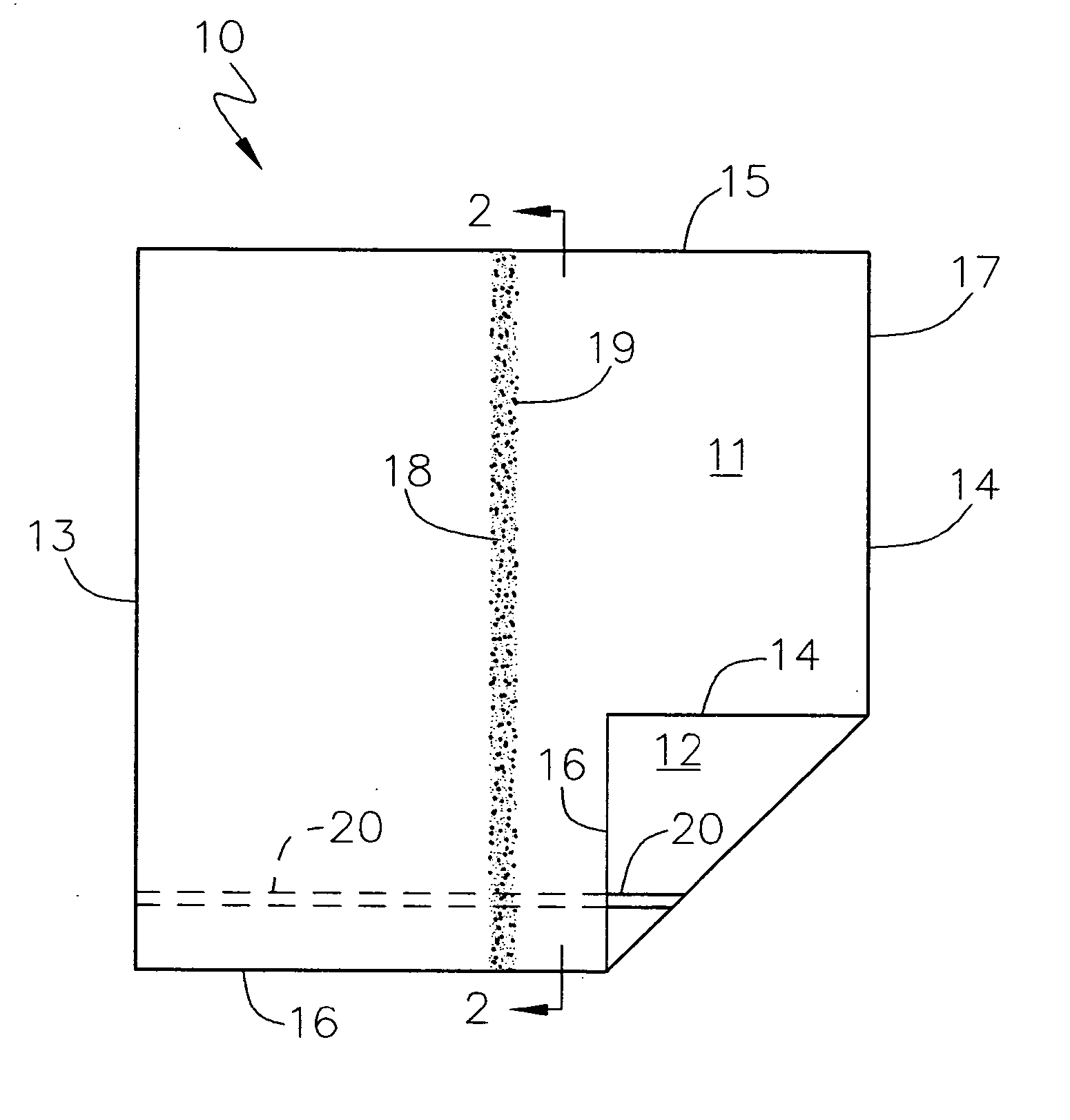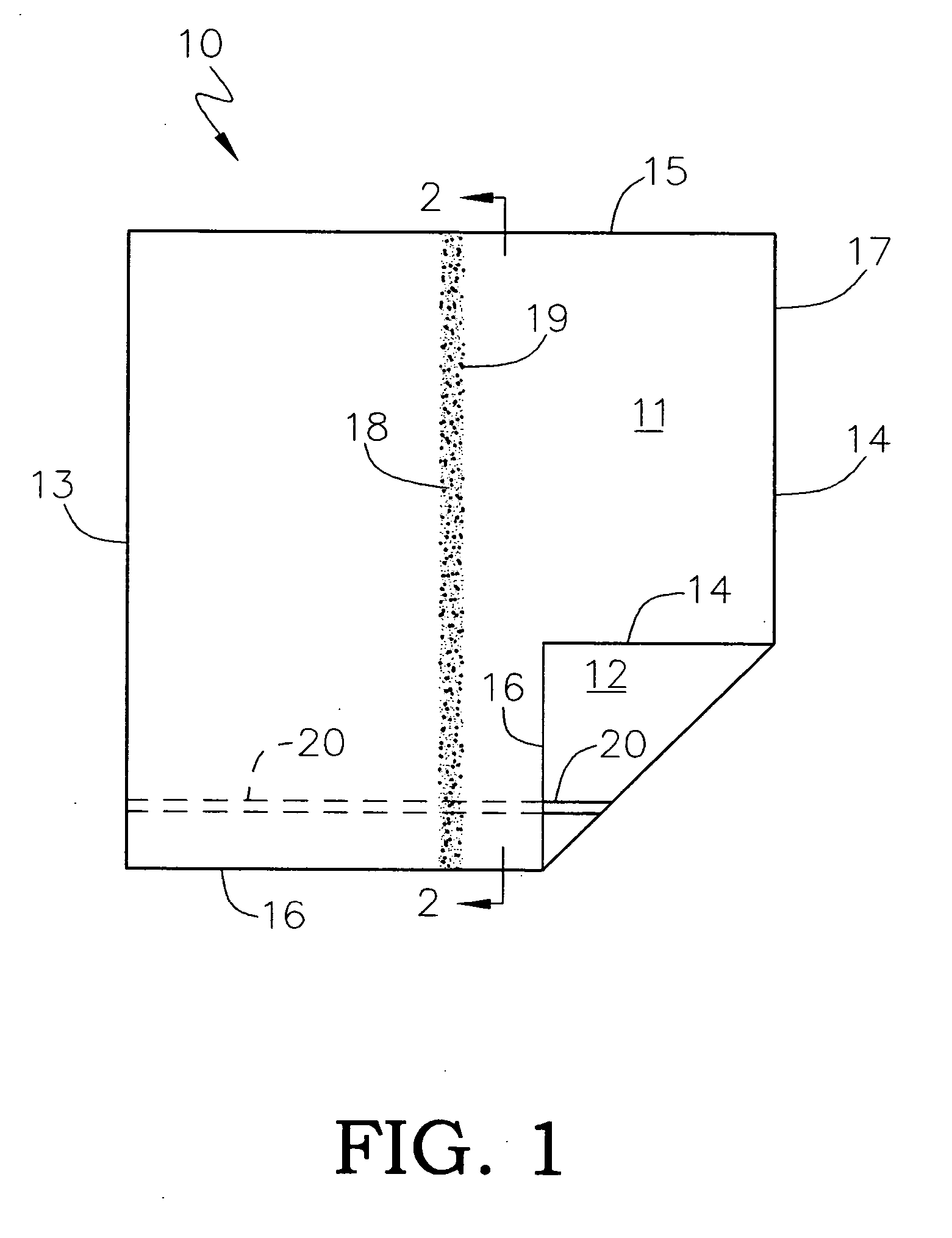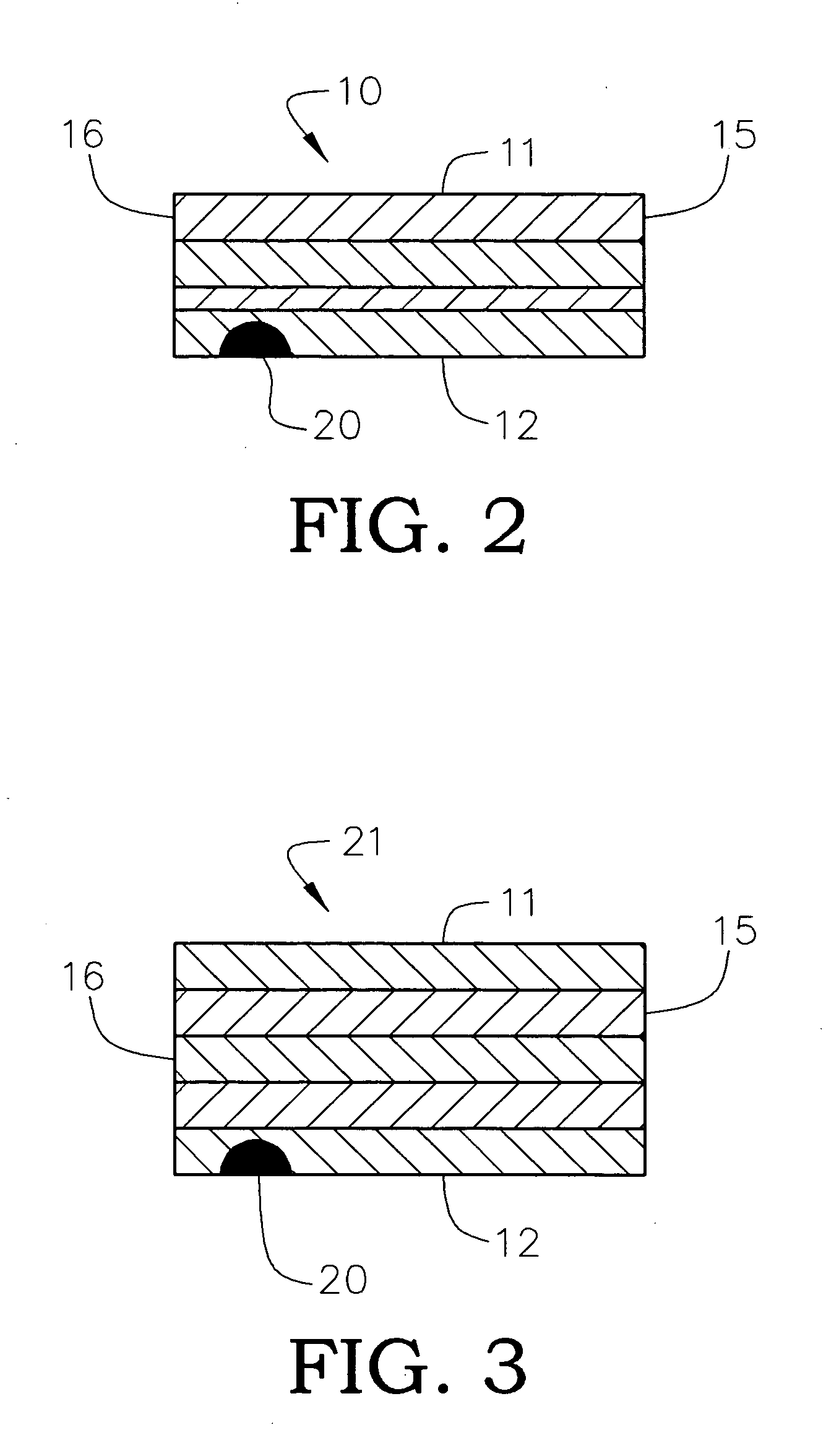Tear initiation and directional tear films and packages made therefrom
a technology of directional tear and packaging film, which is applied in the direction of envelope/bag making machinery, identification means, paper/cardboard containers, etc., can solve the problems of premature spillage of packaged contents, difficulty in maintaining the tearing direction parallel to the molecular orientation of the packaging film, etc., and achieves more control over shape and siz
- Summary
- Abstract
- Description
- Claims
- Application Information
AI Technical Summary
Benefits of technology
Problems solved by technology
Method used
Image
Examples
example 1
[0073] A flexible multilayer packaging film having a four-layer structure was produced having as a first film layer a commercially available three-ply biaxially-oriented polypropylene (ExxonMobil Bicor® CSR-2) which is then reverse-printed. The biaxially-oriented polypropylene has a thickness of 0.60 mil. A surface-roughened portion is made on this surface of the layer extending in the machine direction to form an elongated strip prior to further processing. The fourth film layer was a commercially available biaxially-oriented polyethylene terephthalate (Mitsubishi Polyester Film Hostaphan® 2BCR) having a vacuum-vapor deposited metallized aluminum coating on surface of the layer which serves as the third film layer. Hostaphan® 2BCR is available in a thickness of 0.47 mil, and has a density of 1.395 g / cm3, a tear strength of 20 g / mil in the machine direction, and a total haze of 3.5%. The surface of the first layer opposite the surface having the surface-roughened portion is laminate...
example 2
[0074] A flexible multilayer packaging film having a four-layer structure is produced in a manner similar to that of Example 1, but in this case the fourth layer is a commercially available two-ply heat-sealable biaxially-oriented polyethylene terephthalate (Mitsubishi Polyester Film Hostaphan® 24WS) with an additional layer of a vacuum-vapor deposited metallized aluminum coating. Hostaphan® 24WS is available in a thickness of 0.60 mils, and has a tensile strength of 32,000 in the machine direction, and a total haze of 3.2%.
example 3
[0075] A flexible multilayer packaging film having a four-layer structure was produced in a manner similar to that of Example 1, but in this case the fourth layer was a commercially available three-ply biaxially-oriented polypropylene (AET MXT) with an additional layer of a vacuum-vapor deposited metallized aluminum coating. MXT is available in a thickness of 0.55 mils and has a tensile strength of 21,000 psi (pounds per square inch) in the machine direction / 40,000 psi in the transverse direction.
PUM
| Property | Measurement | Unit |
|---|---|---|
| linear thermal shrinkage | aaaaa | aaaaa |
| linear thermal shrinkage | aaaaa | aaaaa |
| thickness | aaaaa | aaaaa |
Abstract
Description
Claims
Application Information
 Login to View More
Login to View More - R&D
- Intellectual Property
- Life Sciences
- Materials
- Tech Scout
- Unparalleled Data Quality
- Higher Quality Content
- 60% Fewer Hallucinations
Browse by: Latest US Patents, China's latest patents, Technical Efficacy Thesaurus, Application Domain, Technology Topic, Popular Technical Reports.
© 2025 PatSnap. All rights reserved.Legal|Privacy policy|Modern Slavery Act Transparency Statement|Sitemap|About US| Contact US: help@patsnap.com



